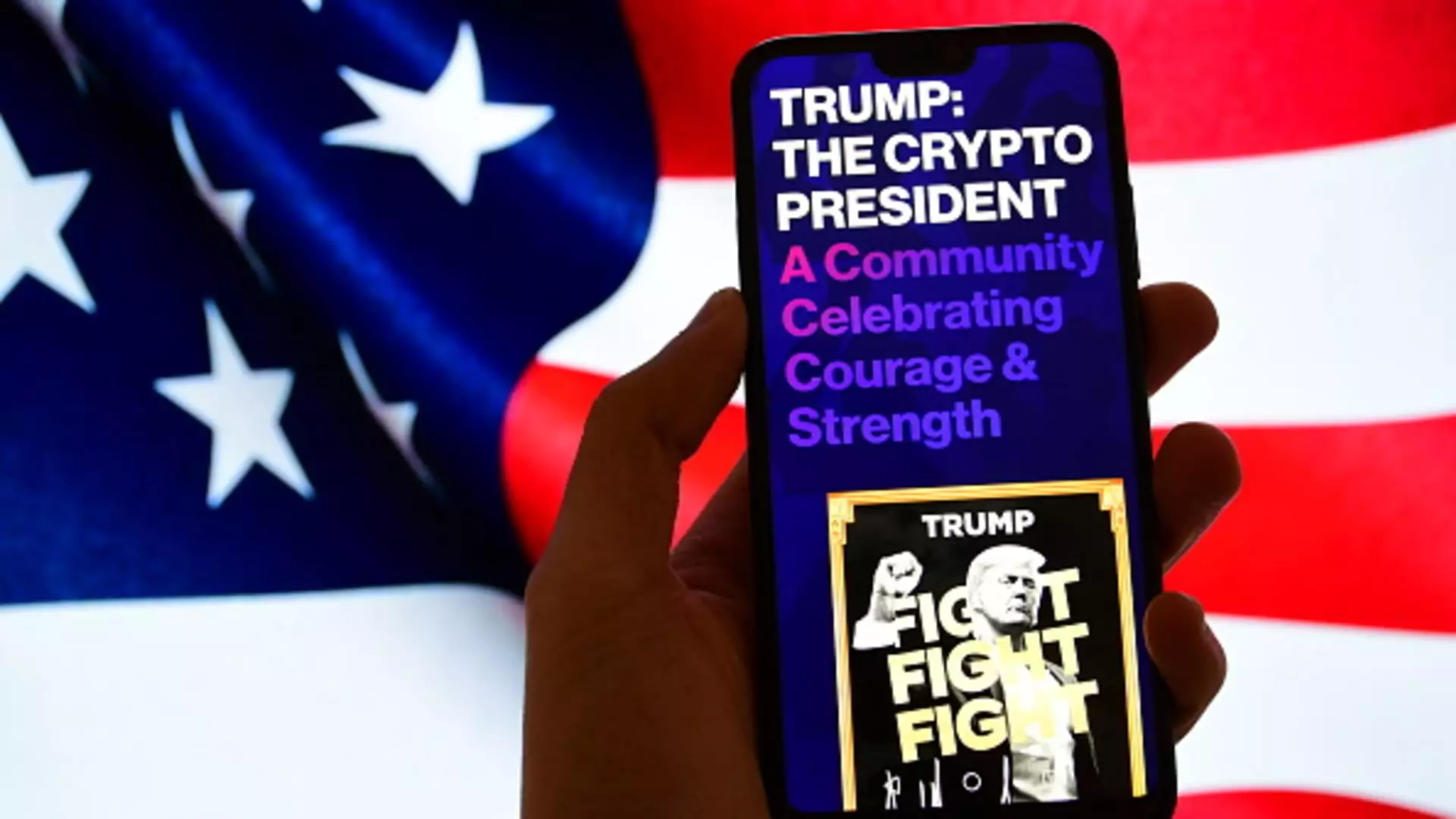In a surprising announcement, former President Donald Trump stated the establishment of a U.S. strategic crypto reserve, positioning it to include high-profile cryptocurrencies like Bitcoin, Ethereum, XRP, Solana (SOL), and Cardano (ADA). Released on Truth Social, this proclamation appears to be a direct shot at the current administration, which Trump alleges has engaged in “corrupt attacks” against the crypto industry. By creating this reserve, Trump aims to solidify the U.S.’s place as a global leader in the evolving digital currency landscape. Such a shift not only involves economic implications but also highlights the intense political dynamics surrounding cryptocurrencies.
The notion of a U.S. Crypto Reserve is revolutionary, as it fundamentally alters the structure of how the government could engage with digital currencies. Trump’s insistence on making the U.S. the “Crypto Capital of the World” lays the groundwork for a definitive transition in the economic landscape, sending ripples of excitement throughout the crypto community. After years of regulatory uncertainty, a stable framework could usher in new levels of institutional investment and consumer confidence.
The immediate aftermath of the announcement was marked by significant surges in cryptocurrency values. XRP skyrocketed by 33%, while Solana and Cardano followed with jumps of 22% and an astonishing 60%, respectively. Even market stalwarts like Bitcoin and Ethereum experienced commendable increases of 9% and 11%. Such rapid market movements signal a robust reaction from investors who may see this as a validation of cryptocurrencies’ potential as a legitimate asset class. The psychological impact of Trump’s commitment to an active reserve program may unleash further speculation and investment into the market.
This upward momentum illustrates not only the speculative nature of cryptocurrencies but also the interconnectedness of political developments and market behavior. Political announcements can sway financial markets significantly, and in this case, it appears that many investors believe that a crypto reserve could stabilize or even enhance the position of digital assets within the broader economy.
In the context of Trump’s announcement, it is crucial to dissect the differences between a “reserve” and a “stockpile.” While a stockpile would imply a passive approach—simply holding onto assets—the concept of a reserve indicates an active strategy that involves ongoing purchases of cryptocurrencies. Under this framework, the U.S. government would not only safeguard its digital assets but also engage with the market, potentially buying at opportune moments to increase its holdings, thereby influencing market prices.
Vigorous speculation about what this reserve may entail has surfaced, particularly regarding which cryptocurrencies will be prioritized. Trump’s decision to include tokens beyond Bitcoin and Ethereum demonstrates a willingness to engage with a diverse array of digital assets. However, the ambiguity surrounding the nature and management of this proposed reserve raises questions about implementation, regulation, and governance. Investors and industry leaders alike will likely seek clarity on these matters in the coming weeks.
Reflecting on previous efforts, Trump mentioned the introduction of a national bitcoin stockpile during an event at the Bitcoin 2024 conference in Nashville, which was a pivotal moment for the adoption of cryptocurrency among politicians. The proposal, although ambitious, originally met tempered enthusiasm due to vague terminology that left potential investors uncertain. The transition from discussing a stockpile to proposing an active crypto reserve indicates a notable shift in strategy, one that could harness the momentum generated from supporters of digital assets.
Furthermore, the timing of this announcement could be crucial. Having recently experienced a turbulent period characterized by a lack of clear regulatory guidance and market stabilization, Trump’s revival of interest in crypto aligns with the broader push for legislative clarity amidst a complex economic landscape. The attention directed towards digital currencies may pave the way for a more structured conversation about regulations, which could further entice institutional investors looking for assurance in the volatility of the cryptocurrency market.
As anticipation builds ahead of Trump hosting the first White House Crypto Summit, stakeholders in the crypto sector will be keenly observing any developments related to the strategic reserve. The forthcoming discussions may inform both the operational framework of the reserve and the broader regulatory environment governing cryptocurrencies. Although future maneuvers remain uncertain, one thing is clear: Trump’s proposal has ignited a renewed passion for digital currencies, opening a new chapter for their role in the American economy. As this narrative unfolds, it presents both challenges and opportunities for the coming era of cryptocurrency investment.

